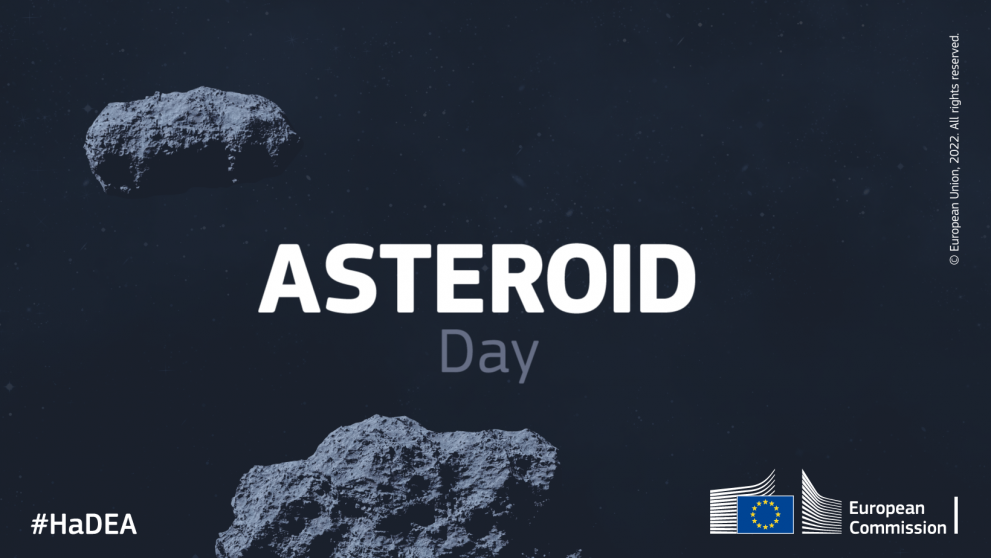
Today marks the International Asteroid Day - a day to raise awareness, inspire, engage and educate the public on asteroids’ importance and risks.
The EU has always played a key role and is currently investing in this area of research to:
- better understand asteroids and comets - they represent what the solar system looked like in its early days. Their composition hasn’t changed much since then.
- protect the planet - the Earth is continuously bombarded by a number of meteors and small asteroids. About 1000 dangerous asteroids are found per year, with an orbit that is crossing the Earth’s orbit and/or that might be on a collision course with Earth. Fortunately, most of the concerned meteors’ size is too small to be a threat to humans. However, there have been instances where large asteroids have fallen on Earth.
- The Chelyabinsk event: In 2013, a 20 m asteroid exploded at an altitude of about 30 km, releasing an energy comparable to 26 times the Hiroshima bomb.
- The Tunguska event: In 1908, an atmospheric explosion caused by 50-60 m asteroid devastated an area of 2150 km2, recording the largest impact in human history. This catastrophic event inspired the international space community to mark it as the Asteroid Day and stress the importance of planetary defence.
In this context, the European Commission has founded European consortia to research on Near Earth Objects (NEOs) since 2012, and has been investing in planetary protection through projects like NEOSHIELD and NEOSHIELD-2.
Currently, HADEA is managing 2 Horizon 2020 projects in the area:
This project is performing observational campaigns throughout the globe in search of small and unclear objects using telescopes equipped with state of the art instrumentation. The aim is to obtain data on the asteroid dynamical and physical properties. The project is also working on enhancing the mathematical modelling required to characterise NEOs and it is constantly updating databases open to the astronomical community.
The Near Earth Object Modelling and Payloads for Protection (NEO-MAPP) project main aim is to better understand NEOs.
The project is working on mathematical models of asteroids to understand their structure and behaviour mainly for planetary protection. The project is developing data analysis tools in preparation of the upcoming ESA HERA mission due to launch in October 2024.
Finally, the project is also developing several scientific instrumentation to study asteroids up-close in future missions. One of the instruments supported under NEO-MAPP is the GRASS gravimeter which will be part of the ESA HERA mission. The GRASS gravimeter will be on board one of the mission’s cubesats (satellites the size of a cereal box), Juventas. In the final phases of the mission, Juventas will land on the surface of an asteroid and the GRASS gravimeter will measure the body’s gravity.
Background
Horizon 2020 (H2020) was the EU’s multiannual funding programme between 2014 and 2020. Horizon Europe is the research and innovation programme of the EU for the period 2021-2027. The Horizon Europe Cluster 4 – Space Programme supports the evolution of the operational “EU Space Programme” components and fosters the competitiveness of the European Space sector as a whole.
Relevant links
Details
- Publication date
- 30 June 2022
- Author
- European Health and Digital Executive Agency
- Programme Sector
- Space
- Programme
- Horizon Europe Cluster 4: Space
- Tags
- EUFunded
- Innovation
- Scientific research
